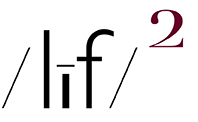INCLUDED IN MY REGULAR DAILY ROTA OF blogs I visit is Photos and Stuff - a blog about the art of photography, more or less. I visit it whenever there is a new entry cuz it is, in fact, about the art of photography as opposed to gear stuff.
In a recent, I Hate Art Photography, the author but forth his feelings, re: “Serious Art Photography”…
“….in contemporary Serious Art Photography. You have to wring out any sense that anything in the picture has any emotional import. You have to remove any sense of feeling. The result must be both utterly numb, and utterly numbing.”
That opinion is a follow up to a previously stated opinion by the author on the same topic…
“…they're literally just rectangles of tone and color blobs, who gives a shit? Just let them be pointless rectangles of tone and color blobs. Nobody cares, It's just some guy with a camera.”
The author leaves little doubt about his feelings, re: “Serious Art Photography.” I have absolutely no problem with that opinion or how it expressed it. To each his own cuz, to quote Julian’s grandmother, “For every pot there’s a lid”.
In support of his opinion, the author posted 2 pictures; 1 straight out of-emphasis on straight-the straight photography school, New Topographics Division, of a man-made subject in its “natural” environment, and, 1 from Sally Mann’s offspring repertoire of child expressing an ambivalent (real or posed) attitude in an ambiguous situation. In my opinion that is kinda like a questionable apple-to-oranges comparison but, nevertheless, I get the point.
A point the author make more clear in his next entry, Photography sans Affect, wherein he writes that….
“….photography's strongest suit is that it recreates the emotional, somatic, experience of being there.”
….an opinion with which I strongly disagree. However, it does support my suspicion that those who have such a belief might find more “emotional import” (aka: “affect”) in my picture of kids on a rock than they would in my picture of utensils in a pan in the sink. iMo, that’s cuz, if all one sees in a picture is the literally depicted referent, then, in this case, most viewers could have some sort of “emotional import” feeling with a picture of kids-any kids-than they could with a picture of kitchen utensils in a kitchen sink.
Let me be perfectly clear, I am not suggesting that those who only appreciate a picture, based upon what is literally depicted, are artistically impaired / visually neanderthal-like. I would attribute their picture viewing preference to the fact that no 2 people’s visual apparatus are “wired”, by nature and/or nurture, alike. What tickles one person’s visual fancy might simply be unrecognizable or “ utterly numbing” to another person’s fancy.
To wit, what I look for in my picture making, what I try to make visible in my pictures, and what I like to find in pictures made by others is captivating form, aka: the visually interesting / arresting “arrangement” of line, shape, space, color, and value (tone) as isolated and captured within the imposed frame(ing) of a segment of the real world. And, interesting form can be seen and captured in a photograph of anything, people, places, or things.
To my eye and sensibilities, a photograph which exhibits interesting form is one that evokes in my visual apparatus a palatable feeling of an engaging aesthetic essence of “rightness”. And, additionally, it most emphatically tickles my visual apparatus inasmuch for knowing that the quotidian world, if one can see it, is a never-ending repository of serious art photography possibilities. A feeling that derives from the fact that a photograph can be about more than what is literally depicted. And a delight that drives from an expanded sense of seeing.
To reiterate, I am not unreservedly criticizing the author’s opinions. However, in the words of Bob Dylan, perhaps he might consider…
“….don’t stand in the doorway, don’t block up the hall and don’t criticize what can’t understand…”
…or criticize what apparently you just can’t see.
